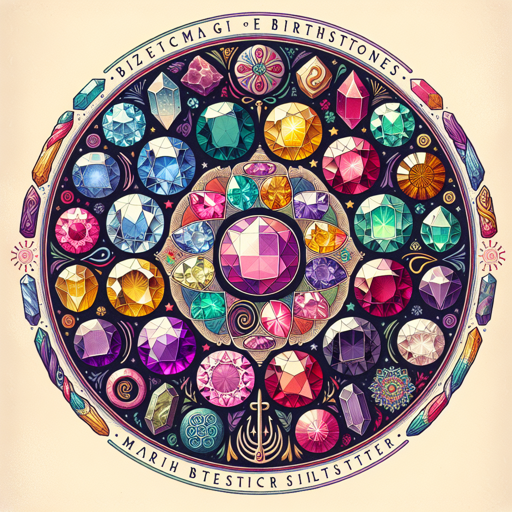The Enchanting Lore of Birthstones
Delve into the tradition and significance of birthstones across various cultures.

Introduction
Birthstones, a concept deeply ingrained in our culture, bear significant meanings and symbolize various aspects of life. Each month of the year is associated with a particular gemstone, believed to possess unique properties that could bring luck, prosperity, and often, healing powers to those born in that month. This article delves into the birthstones’ rich history, their geological formation, and cultural significance in various traditions.
The Origin of Birthstones
The tradition of associating specific gemstones with particular months dates back to biblical times. The first known instance is found in the Book of Exodus, where a breastplate worn by Aaron, the High Priest of the Israelites, was adorned with twelve different gemstones, representing the twelve tribes of Israel. The connection between these stones and the months of the year, and subsequently, the zodiac signs, evolved over centuries and varies across cultures.
Geological Formation of Birthstones
Birthstones are typically minerals that have been geologically formed into beautiful crystalline structures. Some birthstones like diamond, ruby, sapphire, and emerald are formed deep within the Earth’s crust under extreme pressure and temperature conditions. Others, such as pearl and amber, have organic origins.
The Magic and Significance of Each Birthstone
Here’s a detailed look at each month’s birthstone and their believed properties:
| Month | Birthstone | Significance |
|---|---|---|
| January | Garnet | Symbolizes constancy and loyalty |
| February | Amethyst | Believed to strengthen relationships and provide courage |
| March | Aquamarine | Symbolizes youth, health, and hope |
| April | Diamond | Symbolizes eternal love |
| May | Emerald | Represents rebirth and love |
| June | Pearl, Alexandrite | Symbolizes purity and joy |
| July | Ruby | Represents love and passion |
| August | Peridot, Spinel | Symbolizes strength |
| September | Sapphire | Represents wisdom and purity |
| October | Opal, Tourmaline | Believed to bring luck |
| November | Topaz, Citrine | Represents friendship and fidelity |
| December | Turquoise, Zircon | Symbolizes prosperity and success |
“The glory of the star, the freshness of the emerald, all the sweet purity of the sapphire, in the green grass, in the brightness of the air, in the blue sky, in the purple sea, in the face of the beloved.” - John Ruskin
Birthstones in Different Cultures
While the western world largely follows the above list, other cultures have their unique lists of birthstones. For instance, the Indian or Hindu calendar has a different gemstone associated with each rashi or lunar month. Similarly, there’s a diverse list of birthstones in the Tibetan and Arabic cultures.
The Power of Birthstones Today
Today, the allure of birthstones extends beyond their supposed mystical properties. They are popular gifts, especially for birthdays and anniversaries. Whether it’s a diamond ring gifted to a loved one or an emerald necklace passed down through generations, these stones hold emotional value and are cherished keepsakes.
For an in-depth look at the geological aspects of birthstones, visit the U.S. Geological Survey’s website.
Conclusion
Birthstones, with their rich history and cultural significance, continue to charm people across the globe. They serve as a fascinating bridge between various domains - geology, history, culture, and even astrology. Whether you believe in their mystical properties or simply appreciate their beauty, birthstones undoubtedly add a dash of magic and color to our lives.